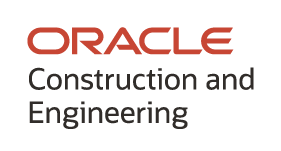Construction companies can boost productivity and reduce risk by automating a common back-office process, writes Mike Antis, global vice president Textura, Oracle Construction and Engineering.
As the digitisation of the construction industry accelerates, a lot of attention has been placed on the most cutting edge technologies, such as the Internet of Things and Building Information Modelling (BIM). While that makes sense, as these technologies are both exciting and transformative, it does mean that simpler changes that lead to substantial productivity gains can get overlooked.
To maximise their performance, construction contractors should think holistically about digital transformation. This means considering high end improvements, such as BIM, and automating back-office processes, such as payments.
The truth is that a lot of organisations’ payment processes are manual and disconnected. How much easier would your project administration be if you could replace the traditional payment process with one that was simplified and standardised? What if that process also boosted efficiency and control for all stakeholders, across invoicing, payment, and compliance management? Finally, what if the process reduced your risk as a general contractor, owner, or subcontractor, and freed up everyone’s time so they could focus on more activities that drive value?
A collaborative payment management solution, such as Oracle’s Textura Payment Management, not only helps manage the payment and billing processes across project participants, it also can forge better, more lasting partnerships in the industry by providing assurance that everyone is paid fairly and on time. These solutions also help eliminate inefficiencies and a slew of risks.
Reducing risk and other opportunities
Automated payment solutions can help companies eliminate manual steps and miscalculations. For example, by automatically generating accurate invoice documents linked to schedules of value.
The technology also allows firms to centralise the tracking of compliance and lien waiver management, in addition to other important documents and reporting. Streamlining these crucial tasks provides further safeguards against risk to all stakeholders.
More broadly, a good strategy for reducing risk is increasing visibility and having a single source of truth. When you centralise payment data using an automated solution, team members can collaborate within a single shared environment. This means all stakeholders, including owners, general contractors, and subcontractors, can do their own checks on compliance and payment status. As a result, they can all anticipate and collaboratively address potential issues before these grow into pressing problems.
Additionally, firms can implement a standardised cloud-based system for financial processes across their ERP and accounting system to give them a complete view of their business through the support reports, dashboards, and analytics. This allows them to capture and analyse payment data across their business, which provides a more strategic view of their current state of affairs.
In all, automated payment solutions help mitigate financial, legal, or reputational risk, while improving cash flow. As construction sites continue to incorporate the latest technology to help teams complete projects in a safer, more streamlined way than possible before, they shouldn’t forget to modernise the payments process as well.
This is an edited version of an Oracle article that has been previously published.
To find out more about how Oracle’s Textura Payment Management can help your firm, click the link or call 1300 366 386.

